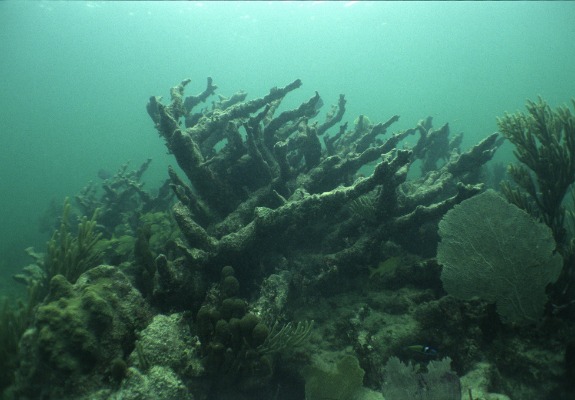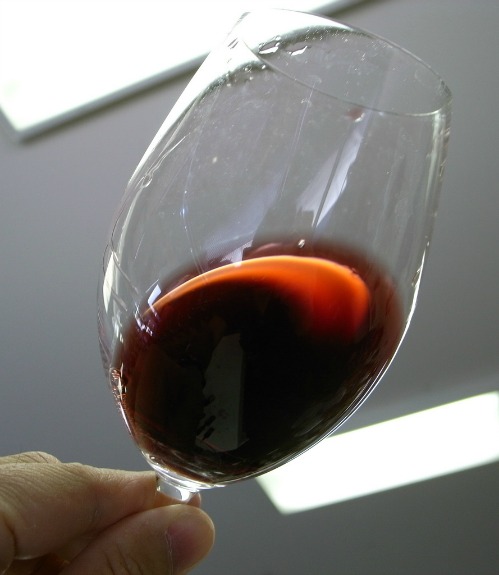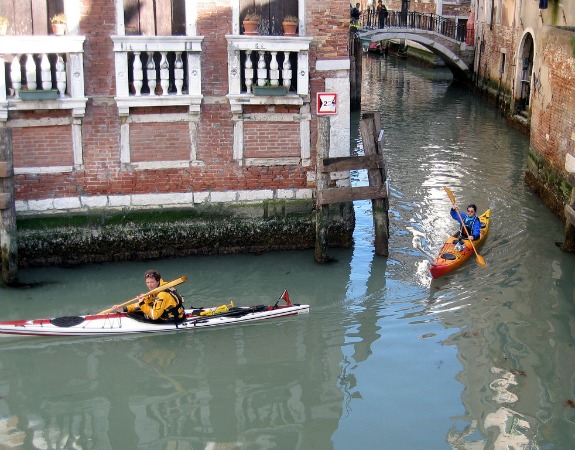Six Things to Do and Places to See Before Climate Change Swamps the Party
Get out and view a wild polar bear and visit Tuvalu and other low-lying islands while you have a chance
If the polar bear fails to adapt to a world without ice, it may be doomed—or be forced to interbreed with brown bears. Photo courtesy of Flickr user adjacknow.
The conversation of climate change and its possible effects on our world and our future often hinges on millimeters of sea level rise and half degrees of temperature increase—little enough, perhaps, to make it all sound irrelevant if you’re already a skeptic, or by no means an emergency, anyway. Yet, little by little, ice is melting, storms are getting worse, deserts are expanding and islands are going under. In 2005, a hundred residents of Tegua, an island in the Torres group, turned off the lights, closed their doors and sailed away for good. It was reported as the first known instance when a modern community was abandoned to rising sea levels—though people have questioned what role global warming really had in the abandonment. Now, more islands, coastal cities, low-lying farmlands and wild wetlands are looking at a future growing grimmer by the year. Here are a few ideas of things to do and places to see before climate change swamps the party.
Walk on the beaches of Tuvalu. While standing on the sand and staring across the world of water that surrounds this Polynesian island group with roughly 10,000 people, climate change suddenly seems a force far beyond reckoning with—for predictions that the seas will rise by a full meter or more by 2100 plainly spell doom for a place like this, whose highest point stands no more than 15 feet above sea level. The island is already famous for its very inadequacy as a sustainable nation. There is not enough freshwater to drink, and there is virtually no economy. Now, sea level rise seems to be gnawing at Tuvalu’s wispy, sandy figure—and at its future. Although climate change doubters have accused islanders in Tuvalu of seeking economic gain by exploiting their predicament—and maybe even exaggerating it (islanders have threatened to sue nations of the developed world for reckless carbon emissions)—some scientists say that Tuvalu, and other islands like it, can count their days. Take a walk on this beach while you can. Other islands to visit while they’re above water might include Vanikoro, Kiribati and the Florida Keys.

Scientists predict that 75 percent of the world’s coral reefs, like this dying clump of coral on a reef in Cuba, are threatened by sea temperature rise and ocean acidification. Photo courtesy of World Resources.
Snorkel on a coral reef. Throughout the world’s tropical oceans, coral reefs are dying. Bleaching and diseases are destroying these rich sites of micro- and mega-organisms. Ocean acidification—caused by CO2 absorption into the sea and characterized by dropping pH levels—is also having severely deleterious effects on coral and could render some marine regions downright corrosive to certain materials by 2050. As of 2011, according to the environmental news source Grist, 75 percent of the earth’s coral reef environments were deemed to be threatened, while 20 percent were reported already dead—their busy, subsurface communities, occupying just 1 percent of the seafloor but home to 25 percent of marine species, gone silent. The timely correlation to rising global temperatures, plus the rapidity of the phenomenon, leaves little doubt that humans are at fault. Put on your masks and fins and jump in—soon.
Taste the fine wines of the Napa Valley before they turn to plonk. While midocean islanders might have to take to lifeboats as climate change unfurls, winemakers may also have consequences pending. In the Napa Valley, some bottles of Cabernet Sauvignon sell for more than $1,000—but a report in 2006 by Southern Oregon University climatologist Gregory Jones predicted that by the year 2050, this most esteemed of American winemaking areas could be too hot to grow premium wine grapes. Jones has said that just a 2 degree Celsius increase by 2050 could place the Napa Valley at the “upper limit of its capability.” But Jones recently told this reporter during a phone interview that the distinction between a fine wine and a mediocre wine is a nuance only detectable by, perhaps, 25 percent of wine drinkers.

Fine wines—like inky, opulent Cabs that can cost $1,000 for a newly released bottle—may lose value as global warming bakes the Napa Valley of California. Photo courtesy of Flickr user naotakem.
See a polar bear. The intrigue and mystique of the polar bear, to say nothing of its camouflaging properties, are so embedded in a world of floating ice that we may wonder just how this greatest of carnivores could live anywhere else. In fact, it may not be able to. While the polar bear is no stranger to munching berries and shoreline grasses, such bruins always take to the ice again at first freeze to resume the blubber hunt. But the ocean’s northerly ice cap, year by year and acre by acre, is disappearing. This summer, for instance, the Arctic sea ice shrank to less than half of its what it was 40 years ago. For the polar bear, extinction is the worst possible, and perhaps likely, outcome—while speciation is another. This could leave the earth without the polar bear but create a new one—a hybrid between Ursus maritimus and its close cousin, U. arctos, the brown bear. Already, the two have been observed mating and producing fertile offspring in the wild. This may be great news. Nonetheless, you may want to go see a wild polar bear while you can—before the great white bear turns brown.
Hike through the woods in the Everglades. The Everglades is among the world’s wild areas most threatened by climate change. A three-foot increase in sea level will flood much of this forested wetland, stealing precious habitat from the indigenous cougar subspecies, the Florida panther, and the local black bear. What’s more, millions of Floridians are looking at serious consequences of climate change. The entire coast is considered extremely vulnerable to the expected sea level rise, which may be accompanied by inundating storm surges during hurricanes. Florida’s highest point is only 345 feet above sea level, and about 10 percent of its coastal zone could be swamped by seawater by 2100.
Kayak the streets of Venice. The future of Venice is nothing but a watery one—though it’s unclear whether the city will prosper or just go under. In 2009, residents held a mass mock funeral for their town when the declining population hit a benchmark low of 60,000. And while an expensive sea wall could save this city, already a gray urban swamp teeming with gondolas and aquatic taxis, some people—call them curmudgeons or realists—are talking about abandoning it. Exacerbating matters is the fact that Venice is sinking and has been for centuries. Four hundred years ago, occasional high tides washed into the streets. By 1900, high waters were washing over St. Mark’s Square at least a half dozen times annually. In 1996, the city flooded 99 times. Today, monuments and buildings are considered threatened by saltwater intrusion, many first floors have been vacated and thriving tourism on the order of 20 million visitors per year seems to be replacing the resident community itself. But it all spells good times for kayak rental companies—and this is at least one vacation you have plenty of time to take. Other cities that could be swallowed by the sea include New York City, Houston, Bangkok and New Orleans.
/https://tf-cmsv2-smithsonianmag-media.s3.amazonaws.com/accounts/headshot/Off-Road-alastair-bland-240.jpg)


/https://tf-cmsv2-smithsonianmag-media.s3.amazonaws.com/accounts/headshot/Off-Road-alastair-bland-240.jpg)